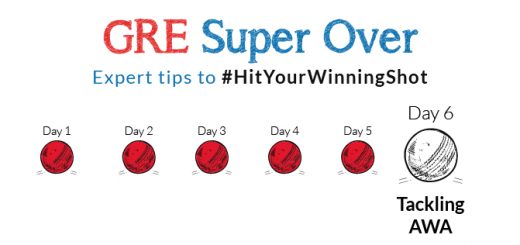Fall 2018: 10 Great Universities You Can STILL Apply to!
If you are planning to pursue graduate studies abroad, it is not too late yet to follow your dreams for Fall 2018! The thumb rule is to prepare in time and apply early, but there are universities with their deadlines coming up between January and March, some deadlines are as far away as June. No! they are not all un-ranked or unheard of institutes. Just like you don’t judge a book by its cover, don’t judge a university by its deadline. Read on to know more about how you can still plan for Fall 2018.
Firstly, let us address the ‘apply early’ dictum.
As it is with all things, it is always wise to plan your application process early. It helps to get your documents ready in time and to apply a little before the deadline. This helps gain time to tackle any eventualities and keep your mind tension-free. There are quite a few steps that go into this process, starting from your GRE/TOEFL/IELTS/GMAT preparations to filing your online application. This is why it is recommended to get going early.
Further, a few universities have a scholarship or financial deadline, which usually falls around mid-November or December. Understandably, many of us would want to target that deadline and so we prepare early.
But here are a few revelations that are hidden between these lines.
Did you know?
- Only a few top universities have their deadlines in the period of November–December
- You can try for scholarships and financial aid even after you get admitted into the university
- There are universities that have ‘rolling admissions’
- There are many known universities in the US with deadlines in the period from January to March
- Some universities in the US have their deadlines in the month of June too
- Early deadlines do not mean early decisions!
- The final deadline for some coveted universities are yet to pass
So, the good news is: You don’t have to wait for Spring’19 or Fall’19 to get going! You can start today. But first, you need to shatter the myth that only the bottom-tier universities have late deadlines in the months ahead.
Have a look at this table to review some options that are still on the table:





Excited to apply to these universities and more?
Get expert guidance to complete your applications before deadlines CLOSE!
Schedule a FREE DEMO CALL NOW!
What you see above are just a few popular options that are available. There are many more options still out there that could be suitable for your profile. So let us chalk out a plan to make the most of this admission season.
How Can You Plan to Meet These Late Deadlines?
#1: Ensure you give your GRE/GMAT and language exams soon.
January–February is a good time to do so if you want to target the deadlines from mid-February. As you can report your score free of cost to some universities at the time of such exams. Use those options wisely to save time.
#2: Apply and arrange for your transcripts, mark sheets, and degrees.
Your transcripts are an official statement of marks issued by your university that have the attestation and stamp of your Controller of Examinations or Registrar. They must be in a signed and sealed envelope and it will be wise to apply and arrange for as many original copies as the number of universities you plan to apply to. These documents are different from the mark sheets you were issued when you graduated or passed each semester. You will need attested copies of your semester-wise mark sheets and degrees too. Often universities can take anywhere from a week to a month or even more to issue the transcripts. So, apply for them soon to have the documents with you in good time.
#3: Work on a master draft of your SOP.
As time is of essence, here is a hack to ensure you are well prepared for all the qualitative questions that the university application forms might ask. Prepare a strong master draft of your Statement of Purpose covering your academics, work experience, projects, achievements, career objectives, and purpose of applying for your masters. This is a time-consuming process. With this document ready, you can borrow from this to trim and form an SOP that will meet the university’s requirements (word limits and some specific essay questions).
#4: Finalize your choice of universities.
If you already have your scores with you, this could be a good starting point for your plans. You can shortlist 6–8 universities that suit your profile and background after studying their courses, deadlines, admission requirements, and past admit trends. This requires extensive research as the options are many. It is not just a question of choosing based on ranks, you also need to look for options where you have a good chance of making a cut.
Apart from self-research, it will help to speak to your seniors, well-wishers, and relatives abroad. There are also dedicated groups and pages on social media that discuss popular universities abroad.
#5: Fill in and submit the online application form.
Once you know your options. You are done with the biggest part of your applications. The final step is to actually fill in and submit your application form. This step requires a lot of care and precision. Be sure of what you enter and review your form at least two or three times before submitting. Do check if you have uploaded the right documents. It is advisable to finish the online application process a few days before the final deadline.
#6: Report your official scores and dispatch the documents packet.
The final leg of your application process is the official score reporting and couriering your documents, such as transcripts and degree (if the university asks for them). Be sure to use the right university and/or department codes while you are reporting your scores. Another point to note is that it is advisable to mention the reference number generated after the submission of the online application on your documents packet to ensure it is added to your application file quickly.
Every step is important and needs to be completed with utmost care and precision. But some planning and hard work can surely see you through this multi-step process.
There may have been many reasons that delayed your plans or you might have just recently decided to apply abroad. Whatever be the reason, there is no need to hold back and wait for the next admission season when you have options to do them right now too!
So, it is time to get started and with a positive attitude, some hard work, and the right guidance you can definitely make it to a world-class graduate program this season itself.
Comment below and let us know if you have any questions. We’ll be happy to answer them all! 🙂











I’m a 3rd Year Student of Ece.From Hyderabad. I have some 2 backlogs which would be cleared by 4th year but my aggregates are low till now i have 52% after clearing all of them it would reach max 60% overall till end of my b.tech . I’m interested in Pursuing Masters in Computer science and i have skills in C java and Oracle. Does my low aggregate and past history of backlogs affects my Masters admission??
Yes, of course, it affects very much. You need a GRE score of at least 310 to get a decent college. Since most colleges have a minimum GPA requirement, there is hope when you apply to colleges such as Auburn University which does not have minimum criteria, with good test scores
I want to Pursue my masters from Usa and i have a great communication skills and C java programming skills but my btech percentage is low and have a backlog history.Can i get a Seat In Computer Science In USA
Very difficult. Look into my reply above.
Is there a chance for me to get MS in CE in ASU? GRE-306(161+145), TOEFL-88, %-67, 2 international papers(IEEE) and research interest in Android. What are my chances?